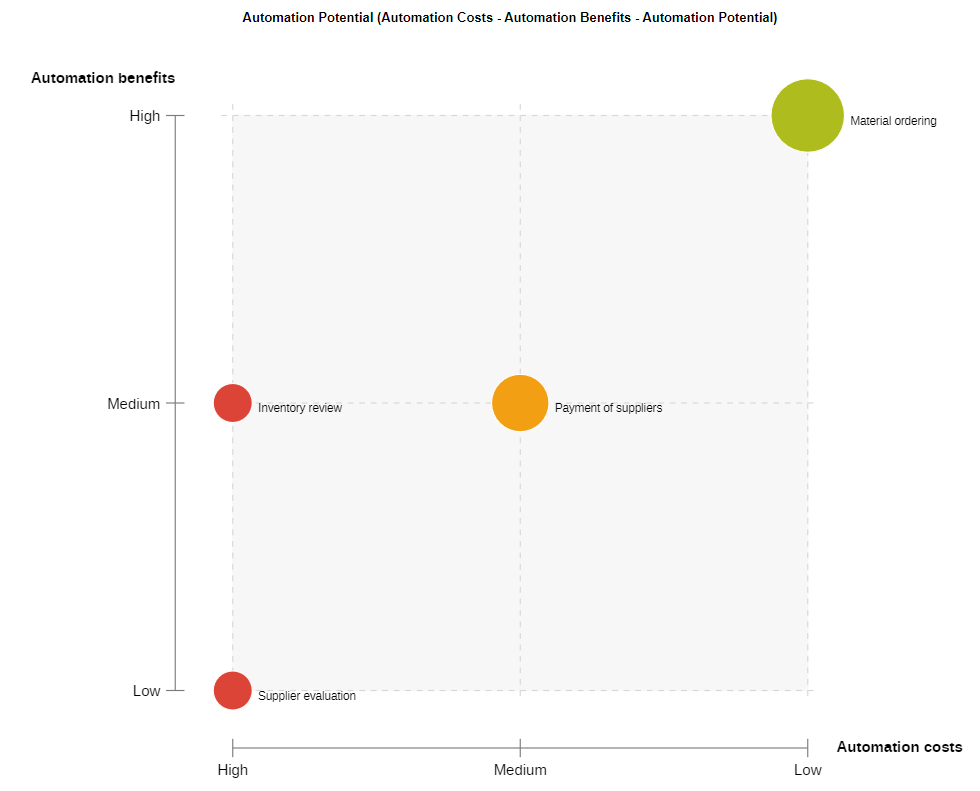Evaluating costs and benefits
Prioritizing automation projects based on cost and benefit is an effective way to identify the most important and promising projects. Both costs and benefits are considered:
Automation costs
Automation costs include not only one-time investment costs, but also all expenses associated with implementing, maintaining, and adapting the automation.
- Implementation effort
- License costs
- Resource requirements (personnel, technology)
- External costs
Benefits of automation
The benefits of automation include the specific advantages that a company has already realized by using automation technologies. These advantages can be both quantitative and qualitative.
Quantitative
- Cost savings
- Productivity increase
- Optimization of resources
- Time savings
Qualitative
- Quality improvement
- Error reduction
- Customer satisfaction
- Higher flexibility








